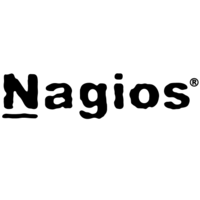What is Graylog and what are its top alternatives?
Top Alternatives to Graylog
 Splunk
SplunkIt provides the leading platform for Operational Intelligence. Customers use it to search, monitor, analyze and visualize machine data. ...
 Logstash
LogstashLogstash is a tool for managing events and logs. You can use it to collect logs, parse them, and store them for later use (like, for searching). If you store them in Elasticsearch, you can view and analyze them with Kibana. ...
 Loggly
LogglyIt is a SaaS solution to manage your log data. There is nothing to install and updates are automatically applied to your Loggly subdomain. ...
 Kibana
KibanaKibana is an open source (Apache Licensed), browser based analytics and search dashboard for Elasticsearch. Kibana is a snap to setup and start using. Kibana strives to be easy to get started with, while also being flexible and powerful, just like Elasticsearch. ...
 Elasticsearch
ElasticsearchElasticsearch is a distributed, RESTful search and analytics engine capable of storing data and searching it in near real time. Elasticsearch, Kibana, Beats and Logstash are the Elastic Stack (sometimes called the ELK Stack). ...
 Nagios
NagiosNagios is a host/service/network monitoring program written in C and released under the GNU General Public License. ...
 ELK
ELKIt is the acronym for three open source projects: Elasticsearch, Logstash, and Kibana. Elasticsearch is a search and analytics engine. Logstash is a server‑side data processing pipeline that ingests data from multiple sources simultaneously, transforms it, and then sends it to a "stash" like Elasticsearch. Kibana lets users visualize data with charts and graphs in Elasticsearch. ...
 Datadog
DatadogDatadog is the leading service for cloud-scale monitoring. It is used by IT, operations, and development teams who build and operate applications that run on dynamic or hybrid cloud infrastructure. Start monitoring in minutes with Datadog! ...
Graylog alternatives & related posts
- API for searching logs, running reports3
- Alert system based on custom query results3
- Splunk language supports string, date manip, math, etc2
- Dashboarding on any log contents2
- Custom log parsing as well as automatic parsing2
- Query engine supports joining, aggregation, stats, etc2
- Rich GUI for searching live logs2
- Ability to style search results into reports2
- Granular scheduling and time window support1
- Query any log as key-value pairs1
- Splunk query language rich so lots to learn1
related Splunk posts
I use Kibana because it ships with the ELK stack. I don't find it as powerful as Splunk however it is light years above grepping through log files. We previously used Grafana but found it to be annoying to maintain a separate tool outside of the ELK stack. We were able to get everything we needed from Kibana.
We are currently exploring Elasticsearch and Splunk for our centralized logging solution. I need some feedback about these two tools. We expect our logs in the range of upwards > of 10TB of logging data.
- Free69
- Easy but powerful filtering18
- Scalable12
- Kibana provides machine learning based analytics to log2
- Great to meet GDPR goals1
- Well Documented1
- Memory-intensive4
- Documentation difficult to use1
related Logstash posts
Often enough I have to explain my way of going about setting up a CI/CD pipeline with multiple deployment platforms. Since I am a bit tired of yapping the same every single time, I've decided to write it up and share with the world this way, and send people to read it instead ;). I will explain it on "live-example" of how the Rome got built, basing that current methodology exists only of readme.md and wishes of good luck (as it usually is ;)).
It always starts with an app, whatever it may be and reading the readmes available while Vagrant and VirtualBox is installing and updating. Following that is the first hurdle to go over - convert all the instruction/scripts into Ansible playbook(s), and only stopping when doing a clear vagrant up or vagrant reload we will have a fully working environment. As our Vagrant environment is now functional, it's time to break it! This is the moment to look for how things can be done better (too rigid/too lose versioning? Sloppy environment setup?) and replace them with the right way to do stuff, one that won't bite us in the backside. This is the point, and the best opportunity, to upcycle the existing way of doing dev environment to produce a proper, production-grade product.
I should probably digress here for a moment and explain why. I firmly believe that the way you deploy production is the same way you should deploy develop, shy of few debugging-friendly setting. This way you avoid the discrepancy between how production work vs how development works, which almost always causes major pains in the back of the neck, and with use of proper tools should mean no more work for the developers. That's why we start with Vagrant as developer boxes should be as easy as vagrant up, but the meat of our product lies in Ansible which will do meat of the work and can be applied to almost anything: AWS, bare metal, docker, LXC, in open net, behind vpn - you name it.
We must also give proper consideration to monitoring and logging hoovering at this point. My generic answer here is to grab Elasticsearch, Kibana, and Logstash. While for different use cases there may be better solutions, this one is well battle-tested, performs reasonably and is very easy to scale both vertically (within some limits) and horizontally. Logstash rules are easy to write and are well supported in maintenance through Ansible, which as I've mentioned earlier, are at the very core of things, and creating triggers/reports and alerts based on Elastic and Kibana is generally a breeze, including some quite complex aggregations.
If we are happy with the state of the Ansible it's time to move on and put all those roles and playbooks to work. Namely, we need something to manage our CI/CD pipelines. For me, the choice is obvious: TeamCity. It's modern, robust and unlike most of the light-weight alternatives, it's transparent. What I mean by that is that it doesn't tell you how to do things, doesn't limit your ways to deploy, or test, or package for that matter. Instead, it provides a developer-friendly and rich playground for your pipelines. You can do most the same with Jenkins, but it has a quite dated look and feel to it, while also missing some key functionality that must be brought in via plugins (like quality REST API which comes built-in with TeamCity). It also comes with all the common-handy plugins like Slack or Apache Maven integration.
The exact flow between CI and CD varies too greatly from one application to another to describe, so I will outline a few rules that guide me in it: 1. Make build steps as small as possible. This way when something breaks, we know exactly where, without needing to dig and root around. 2. All security credentials besides development environment must be sources from individual Vault instances. Keys to those containers should exist only on the CI/CD box and accessible by a few people (the less the better). This is pretty self-explanatory, as anything besides dev may contain sensitive data and, at times, be public-facing. Because of that appropriate security must be present. TeamCity shines in this department with excellent secrets-management. 3. Every part of the build chain shall consume and produce artifacts. If it creates nothing, it likely shouldn't be its own build. This way if any issue shows up with any environment or version, all developer has to do it is grab appropriate artifacts to reproduce the issue locally. 4. Deployment builds should be directly tied to specific Git branches/tags. This enables much easier tracking of what caused an issue, including automated identifying and tagging the author (nothing like automated regression testing!).
Speaking of deployments, I generally try to keep it simple but also with a close eye on the wallet. Because of that, I am more than happy with AWS or another cloud provider, but also constantly peeking at the loads and do we get the value of what we are paying for. Often enough the pattern of use is not constantly erratic, but rather has a firm baseline which could be migrated away from the cloud and into bare metal boxes. That is another part where this approach strongly triumphs over the common Docker and CircleCI setup, where you are very much tied in to use cloud providers and getting out is expensive. Here to embrace bare-metal hosting all you need is a help of some container-based self-hosting software, my personal preference is with Proxmox and LXC. Following that all you must write are ansible scripts to manage hardware of Proxmox, similar way as you do for Amazon EC2 (ansible supports both greatly) and you are good to go. One does not exclude another, quite the opposite, as they can live in great synergy and cut your costs dramatically (the heavier your base load, the bigger the savings) while providing production-grade resiliency.
Hi everyone. I'm trying to create my personal syslog monitoring.
To get the logs, I have uncertainty to choose the way: 1.1 Use Logstash like a TCP server. 1.2 Implement a Go TCP server.
To store and plot data. 2.1 Use Elasticsearch tools. 2.2 Use InfluxDB and Grafana.
I would like to know... Which is a cheaper and scalable solution?
Or even if there is a better way to do it.
- Centralized log management37
- Easy to setup25
- Great filtering21
- Live logging16
- Json log support15
- Log Management10
- Alerting10
- Great Dashboards7
- Love the product7
- Heroku Add-on4
- Easy to setup and use2
- Easy setup2
- No alerts in free plan2
- Great UI2
- Good parsing2
- Powerful2
- Fast search2
- Backup to S32
- Pricey after free plan3
related Loggly posts
- Easy to setup88
- Free65
- Can search text45
- Has pie chart21
- X-axis is not restricted to timestamp13
- Easy queries and is a good way to view logs9
- Supports Plugins6
- Dev Tools4
- More "user-friendly"3
- Can build dashboards3
- Out-of-Box Dashboards/Analytics for Metrics/Heartbeat2
- Easy to drill-down2
- Up and running1
- Unintuituve7
- Works on top of elastic only4
- Elasticsearch is huge4
- Hardweight UI3
related Kibana posts
Often enough I have to explain my way of going about setting up a CI/CD pipeline with multiple deployment platforms. Since I am a bit tired of yapping the same every single time, I've decided to write it up and share with the world this way, and send people to read it instead ;). I will explain it on "live-example" of how the Rome got built, basing that current methodology exists only of readme.md and wishes of good luck (as it usually is ;)).
It always starts with an app, whatever it may be and reading the readmes available while Vagrant and VirtualBox is installing and updating. Following that is the first hurdle to go over - convert all the instruction/scripts into Ansible playbook(s), and only stopping when doing a clear vagrant up or vagrant reload we will have a fully working environment. As our Vagrant environment is now functional, it's time to break it! This is the moment to look for how things can be done better (too rigid/too lose versioning? Sloppy environment setup?) and replace them with the right way to do stuff, one that won't bite us in the backside. This is the point, and the best opportunity, to upcycle the existing way of doing dev environment to produce a proper, production-grade product.
I should probably digress here for a moment and explain why. I firmly believe that the way you deploy production is the same way you should deploy develop, shy of few debugging-friendly setting. This way you avoid the discrepancy between how production work vs how development works, which almost always causes major pains in the back of the neck, and with use of proper tools should mean no more work for the developers. That's why we start with Vagrant as developer boxes should be as easy as vagrant up, but the meat of our product lies in Ansible which will do meat of the work and can be applied to almost anything: AWS, bare metal, docker, LXC, in open net, behind vpn - you name it.
We must also give proper consideration to monitoring and logging hoovering at this point. My generic answer here is to grab Elasticsearch, Kibana, and Logstash. While for different use cases there may be better solutions, this one is well battle-tested, performs reasonably and is very easy to scale both vertically (within some limits) and horizontally. Logstash rules are easy to write and are well supported in maintenance through Ansible, which as I've mentioned earlier, are at the very core of things, and creating triggers/reports and alerts based on Elastic and Kibana is generally a breeze, including some quite complex aggregations.
If we are happy with the state of the Ansible it's time to move on and put all those roles and playbooks to work. Namely, we need something to manage our CI/CD pipelines. For me, the choice is obvious: TeamCity. It's modern, robust and unlike most of the light-weight alternatives, it's transparent. What I mean by that is that it doesn't tell you how to do things, doesn't limit your ways to deploy, or test, or package for that matter. Instead, it provides a developer-friendly and rich playground for your pipelines. You can do most the same with Jenkins, but it has a quite dated look and feel to it, while also missing some key functionality that must be brought in via plugins (like quality REST API which comes built-in with TeamCity). It also comes with all the common-handy plugins like Slack or Apache Maven integration.
The exact flow between CI and CD varies too greatly from one application to another to describe, so I will outline a few rules that guide me in it: 1. Make build steps as small as possible. This way when something breaks, we know exactly where, without needing to dig and root around. 2. All security credentials besides development environment must be sources from individual Vault instances. Keys to those containers should exist only on the CI/CD box and accessible by a few people (the less the better). This is pretty self-explanatory, as anything besides dev may contain sensitive data and, at times, be public-facing. Because of that appropriate security must be present. TeamCity shines in this department with excellent secrets-management. 3. Every part of the build chain shall consume and produce artifacts. If it creates nothing, it likely shouldn't be its own build. This way if any issue shows up with any environment or version, all developer has to do it is grab appropriate artifacts to reproduce the issue locally. 4. Deployment builds should be directly tied to specific Git branches/tags. This enables much easier tracking of what caused an issue, including automated identifying and tagging the author (nothing like automated regression testing!).
Speaking of deployments, I generally try to keep it simple but also with a close eye on the wallet. Because of that, I am more than happy with AWS or another cloud provider, but also constantly peeking at the loads and do we get the value of what we are paying for. Often enough the pattern of use is not constantly erratic, but rather has a firm baseline which could be migrated away from the cloud and into bare metal boxes. That is another part where this approach strongly triumphs over the common Docker and CircleCI setup, where you are very much tied in to use cloud providers and getting out is expensive. Here to embrace bare-metal hosting all you need is a help of some container-based self-hosting software, my personal preference is with Proxmox and LXC. Following that all you must write are ansible scripts to manage hardware of Proxmox, similar way as you do for Amazon EC2 (ansible supports both greatly) and you are good to go. One does not exclude another, quite the opposite, as they can live in great synergy and cut your costs dramatically (the heavier your base load, the bigger the savings) while providing production-grade resiliency.
This is my stack in Application & Data
JavaScript PHP HTML5 jQuery Redis Amazon EC2 Ubuntu Sass Vue.js Firebase Laravel Lumen Amazon RDS GraphQL MariaDB
My Utilities Tools
Google Analytics Postman Elasticsearch
My Devops Tools
Git GitHub GitLab npm Visual Studio Code Kibana Sentry BrowserStack
My Business Tools
Slack
- Powerful api328
- Great search engine315
- Open source231
- Restful214
- Near real-time search200
- Free98
- Search everything85
- Easy to get started54
- Analytics45
- Distributed26
- Fast search6
- More than a search engine5
- Great docs4
- Awesome, great tool4
- Highly Available3
- Easy to scale3
- Potato2
- Document Store2
- Great customer support2
- Intuitive API2
- Nosql DB2
- Great piece of software2
- Reliable2
- Fast2
- Easy setup2
- Open1
- Easy to get hot data1
- Github1
- Elaticsearch1
- Actively developing1
- Responsive maintainers on GitHub1
- Ecosystem1
- Not stable1
- Scalability1
- Community0
- Resource hungry7
- Diffecult to get started6
- Expensive5
- Hard to keep stable at large scale4
related Elasticsearch posts
We've been using PostgreSQL since the very early days of Zulip, but we actually didn't use it from the beginning. Zulip started out as a MySQL project back in 2012, because we'd heard it was a good choice for a startup with a wide community. However, we found that even though we were using the Django ORM for most of our database access, we spent a lot of time fighting with MySQL. Issues ranged from bad collation defaults, to bad query plans which required a lot of manual query tweaks.
We ended up getting so frustrated that we tried out PostgresQL, and the results were fantastic. We didn't have to do any real customization (just some tuning settings for how big a server we had), and all of our most important queries were faster out of the box. As a result, we were able to delete a bunch of custom queries escaping the ORM that we'd written to make the MySQL query planner happy (because postgres just did the right thing automatically).
And then after that, we've just gotten a ton of value out of postgres. We use its excellent built-in full-text search, which has helped us avoid needing to bring in a tool like Elasticsearch, and we've really enjoyed features like its partial indexes, which saved us a lot of work adding unnecessary extra tables to get good performance for things like our "unread messages" and "starred messages" indexes.
I can't recommend it highly enough.
Often enough I have to explain my way of going about setting up a CI/CD pipeline with multiple deployment platforms. Since I am a bit tired of yapping the same every single time, I've decided to write it up and share with the world this way, and send people to read it instead ;). I will explain it on "live-example" of how the Rome got built, basing that current methodology exists only of readme.md and wishes of good luck (as it usually is ;)).
It always starts with an app, whatever it may be and reading the readmes available while Vagrant and VirtualBox is installing and updating. Following that is the first hurdle to go over - convert all the instruction/scripts into Ansible playbook(s), and only stopping when doing a clear vagrant up or vagrant reload we will have a fully working environment. As our Vagrant environment is now functional, it's time to break it! This is the moment to look for how things can be done better (too rigid/too lose versioning? Sloppy environment setup?) and replace them with the right way to do stuff, one that won't bite us in the backside. This is the point, and the best opportunity, to upcycle the existing way of doing dev environment to produce a proper, production-grade product.
I should probably digress here for a moment and explain why. I firmly believe that the way you deploy production is the same way you should deploy develop, shy of few debugging-friendly setting. This way you avoid the discrepancy between how production work vs how development works, which almost always causes major pains in the back of the neck, and with use of proper tools should mean no more work for the developers. That's why we start with Vagrant as developer boxes should be as easy as vagrant up, but the meat of our product lies in Ansible which will do meat of the work and can be applied to almost anything: AWS, bare metal, docker, LXC, in open net, behind vpn - you name it.
We must also give proper consideration to monitoring and logging hoovering at this point. My generic answer here is to grab Elasticsearch, Kibana, and Logstash. While for different use cases there may be better solutions, this one is well battle-tested, performs reasonably and is very easy to scale both vertically (within some limits) and horizontally. Logstash rules are easy to write and are well supported in maintenance through Ansible, which as I've mentioned earlier, are at the very core of things, and creating triggers/reports and alerts based on Elastic and Kibana is generally a breeze, including some quite complex aggregations.
If we are happy with the state of the Ansible it's time to move on and put all those roles and playbooks to work. Namely, we need something to manage our CI/CD pipelines. For me, the choice is obvious: TeamCity. It's modern, robust and unlike most of the light-weight alternatives, it's transparent. What I mean by that is that it doesn't tell you how to do things, doesn't limit your ways to deploy, or test, or package for that matter. Instead, it provides a developer-friendly and rich playground for your pipelines. You can do most the same with Jenkins, but it has a quite dated look and feel to it, while also missing some key functionality that must be brought in via plugins (like quality REST API which comes built-in with TeamCity). It also comes with all the common-handy plugins like Slack or Apache Maven integration.
The exact flow between CI and CD varies too greatly from one application to another to describe, so I will outline a few rules that guide me in it: 1. Make build steps as small as possible. This way when something breaks, we know exactly where, without needing to dig and root around. 2. All security credentials besides development environment must be sources from individual Vault instances. Keys to those containers should exist only on the CI/CD box and accessible by a few people (the less the better). This is pretty self-explanatory, as anything besides dev may contain sensitive data and, at times, be public-facing. Because of that appropriate security must be present. TeamCity shines in this department with excellent secrets-management. 3. Every part of the build chain shall consume and produce artifacts. If it creates nothing, it likely shouldn't be its own build. This way if any issue shows up with any environment or version, all developer has to do it is grab appropriate artifacts to reproduce the issue locally. 4. Deployment builds should be directly tied to specific Git branches/tags. This enables much easier tracking of what caused an issue, including automated identifying and tagging the author (nothing like automated regression testing!).
Speaking of deployments, I generally try to keep it simple but also with a close eye on the wallet. Because of that, I am more than happy with AWS or another cloud provider, but also constantly peeking at the loads and do we get the value of what we are paying for. Often enough the pattern of use is not constantly erratic, but rather has a firm baseline which could be migrated away from the cloud and into bare metal boxes. That is another part where this approach strongly triumphs over the common Docker and CircleCI setup, where you are very much tied in to use cloud providers and getting out is expensive. Here to embrace bare-metal hosting all you need is a help of some container-based self-hosting software, my personal preference is with Proxmox and LXC. Following that all you must write are ansible scripts to manage hardware of Proxmox, similar way as you do for Amazon EC2 (ansible supports both greatly) and you are good to go. One does not exclude another, quite the opposite, as they can live in great synergy and cut your costs dramatically (the heavier your base load, the bigger the savings) while providing production-grade resiliency.
Nagios
- It just works53
- The standard28
- Customizable12
- The Most flexible monitoring system8
- Huge stack of free checks/plugins to choose from1
related Nagios posts
Why we spent several years building an open source, large-scale metrics alerting system, M3, built for Prometheus:
By late 2014, all services, infrastructure, and servers at Uber emitted metrics to a Graphite stack that stored them using the Whisper file format in a sharded Carbon cluster. We used Grafana for dashboarding and Nagios for alerting, issuing Graphite threshold checks via source-controlled scripts. While this worked for a while, expanding the Carbon cluster required a manual resharding process and, due to lack of replication, any single node’s disk failure caused permanent loss of its associated metrics. In short, this solution was not able to meet our needs as the company continued to grow.
To ensure the scalability of Uber’s metrics backend, we decided to build out a system that provided fault tolerant metrics ingestion, storage, and querying as a managed platform...
(GitHub : https://github.com/m3db/m3)
I am new to DevOps and looking for training in DevOps. Some institutes are offering Nagios while some Prometheus in their syllabus. Please suggest which one is being used in the industry and which one should I learn.
- Open source14
- Can run locally4
- Good for startups with monetary limitations3
- External Network Goes Down You Aren't Without Logging1
- Easy to setup1
- Json log supprt0
- Live logging0
- Elastic Search is a resource hog5
- Logstash configuration is a pain3
- Bad for startups with personal limitations1
related ELK posts
Docker Docker Compose Portainer ELK Elasticsearch Kibana Logstash nginx
- Monitoring for many apps (databases, web servers, etc)139
- Easy setup107
- Powerful ui87
- Powerful integrations84
- Great value70
- Great visualization54
- Events + metrics = clarity46
- Notifications41
- Custom metrics41
- Flexibility39
- Free & paid plans19
- Great customer support16
- Makes my life easier15
- Adapts automatically as i scale up10
- Easy setup and plugins9
- Super easy and powerful8
- AWS support7
- In-context collaboration7
- Rich in features6
- Docker support5
- Cost4
- Full visibility of applications4
- Monitor almost everything4
- Cute logo4
- Automation tools4
- Source control and bug tracking4
- Simple, powerful, great for infra4
- Easy to Analyze4
- Best than others4
- Best in the field3
- Expensive3
- Good for Startups3
- Free setup3
- APM2
- Expensive20
- No errors exception tracking4
- External Network Goes Down You Wont Be Logging2
- Complicated1
related Datadog posts
Our primary source of monitoring and alerting is Datadog. We’ve got prebuilt dashboards for every scenario and integration with PagerDuty to manage routing any alerts. We’ve definitely scaled past the point where managing dashboards is easy, but we haven’t had time to invest in using features like Anomaly Detection. We’ve started using Honeycomb for some targeted debugging of complex production issues and we are liking what we’ve seen. We capture any unhandled exceptions with Rollbar and, if we realize one will keep happening, we quickly convert the metrics to point back to Datadog, to keep Rollbar as clean as possible.
We use Segment to consolidate all of our trackers, the most important of which goes to Amplitude to analyze user patterns. However, if we need a more consolidated view, we push all of our data to our own data warehouse running PostgreSQL; this is available for analytics and dashboard creation through Looker.
Hey there! We are looking at Datadog, Dynatrace, AppDynamics, and New Relic as options for our web application monitoring.
Current Environment: .NET Core Web app hosted on Microsoft IIS
Future Environment: Web app will be hosted on Microsoft Azure
Tech Stacks: IIS, RabbitMQ, Redis, Microsoft SQL Server
Requirement: Infra Monitoring, APM, Real - User Monitoring (User activity monitoring i.e., time spent on a page, most active page, etc.), Service Tracing, Root Cause Analysis, and Centralized Log Management.
Please advise on the above. Thanks!


































